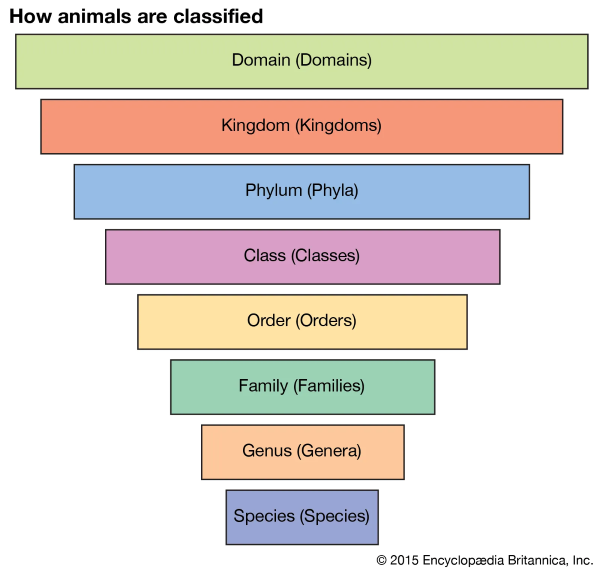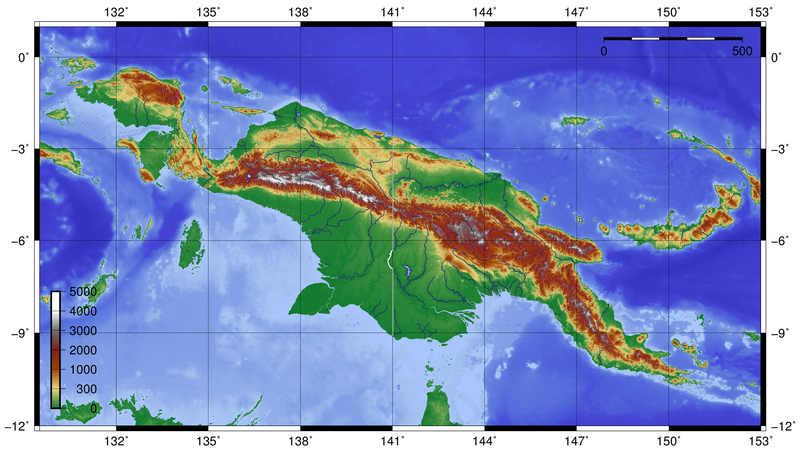C1.4 - Speciation
What is a species?
- species: members of a population that can interbreed and produce viable offspring
- known as the biological species concept
- limitation: does not include asexually reproductive species or fossils
- Reproductively isolated
- No gene flow through different species
- Species differentiated by appearance or morphology
- morphology: change in form
- genus: a “clan name” for living things, what group a species belongs to
Taxonomy of Life
In order: domain, kingdom, phylum, class, order, family, genus, species

Binomial Nomenclature of Life
- Designed by Carolus Linnaeus [Latinized name] (1707-78), Swedish botanist
- botanist: person who studies plants
- binomial nomenclature: naming system (of life) involving two names
- THE NAMING SYSTEM
- Genus species
- i.e. Homo sapien
- Puts species w/ most similarities closest together
- Linnaeus’s first book had 12 pages
- 12th ed: 1,500 pages
Speciation + Hybrids
- speciation: evolutionary formation of new species
- microevolution: evolutionary changes that occur within a species
- macroevolution: evolutionary changes taht result in a new species formation
- hybrid: offspring that results from mating of individuals from two different species
Reproductive Isolating Mechanisms
- Speciation is a result of reproductive isolation
- Prevents individuals from different (or same, but separated) species from mating together
- Prezygotic mechanisms prevent fertilization
- Postzygotic mechanisms prevent zygote from becoming a healthy or fertile adult
- zygote: the individual that forms when sperm cell meets egg cell
- fertility: ability to produce healthy offspring
Ecological / Geographic Isolation
- ecological / geographic isolation: species occupying seperate habitats or niches
- Usually seperated by dramatic barriers to travel
- Species do not encounter one another and can’t mate together
- i.e. rodent populations at diff. altitudes, or species seperated by mountain range
New Guinea topology, central red line is the mountain range, New Guinea Highlands

Speciation diagram

Habitat Isolation
- habitat isolation: similar species reproductively isolated due to adapting to habitats in the same general location
- Examples
- 2 species of three-spined stickleback fish in B.C. lakes: one lives off of snails at seafloor whereas others feed off plankton near the surface
- 2 species of garter snake: one lives on land, other lives on water
- 2 species of oak tree: one grows in sandy soil, but other grows in loamy soil
Temporal Isolation
- temporal isolation: isolation that occurs when reproductive cycles occur at different times
- Reproductive cycles occur at different times
- Species overlap geographically but flowering time or mating seasons do not
- i.e. certain cacti flower at night, others at daytime
Mechanical Isolation
- mechanical isolation: isolation from structural / physical incompatibilities of reproductive or sexual organs
- Structural differences in reproductive organs
- arthropod: phlyum of invertabrates w/ jointed exoskeletons
- includes insects, crustaceans, arachnids
- Arthropod penis shape prevents mating between closely related species
- Orchids are adapted to specific pollinators, preventing species cross-pollination
Other Forms of Isolation
- behavioural isolation: isolation when species have different relationship or mating behaviours
- i.e. Eastern and western meadowhawks are seperate species because they have different relationship rituals, including songs to attract mates
- gametic isolation: isolation when sperm and eggs of different species are unable to recognize / incompatible with each other
- hybrid inviability: hybrid produced is unhealthy, underdeveloped, and/or weak
- hybrid infertility: hybrid produced is healthy, but cannot reproduce
Hybrids
- hybrid: offspring of gentically dissimilar parents
- Postzygotic isolation
- Hybrid zygote may develop into a healthy adult
- Offspring usually sterile
- i.e. mule
- In plants, hybrid vigor may result
- hybrid vigor: when hybrid plant produces larger flowers or fruits
Effect of Human Activities
- Humans introduced new non-native predators while exploring new places
- Non-native predators kill off a lot of native species
- Some species mistake human pollution for food or get stuck in human activities like fishing nets or plastic bags
- Examples of endangered species
- kakapo, flightless parrot, endangered due to pets and livestock, easy prey
- leatherback turtle, get caught in fishing equipment, eat plastic bags thinking they are jellyfish, and they and eggs are hunted in breeding grounds in Central / South America
Parapatric Speciation
- Parent species occupies a continous habitat within same geographical area
- Population enters a new niche and becomes reproductively isolated
- Two populations live side by side or continously
- i.e. Two species of frogs live on wetlands and drylands. Over time, they adapt to their environment and can’t interbreed
Ring Species
- Form of parapatric speciation
- Connected series of neighbouring populations that can interbreed
- However, two end populations are so different that they can’t interbreed anymore
Sources
- Mr. C. Jones
- BiologySource 11
- https://www.britannica.com/science/taxonomy